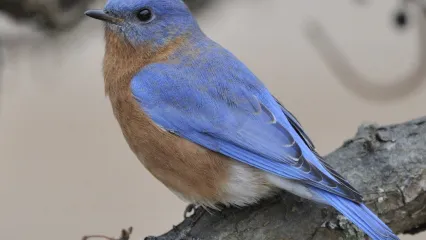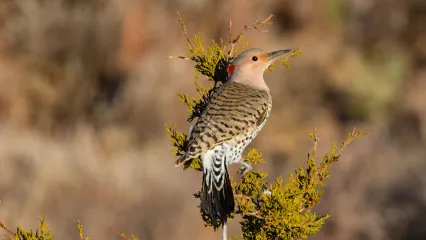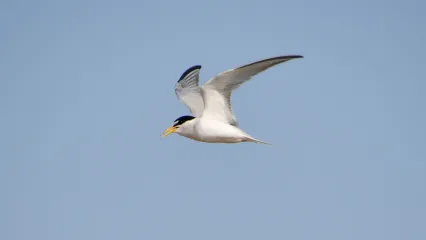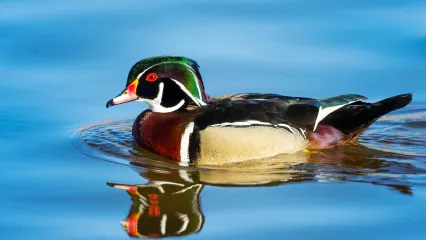
Description
As with many songbirds, male eastern bluebirds are more brilliantly-colored than females. In addition to uniformly deep blue feathers on the head, back, wings and tail, males have chestnut throats, breasts and flanks. The belly is white. Because the blue coloration is simply a result of light interacting with the structure of individual feathers, the intensity of a bluebird’s color changes with the brightness and angle of light illuminating it. Females have muted coloration when compared to males; the head and back is blue-gray and the throat and breast is dull orange.
Size
6-8 inches long.
Habitat
A cavity nester, eastern bluebirds traditionally use abandoned woodpecker nests in standing snags or dead or dying trees. When those trees are harvested for timber or cut down because of safety concerns, bluebirds must seek other cavities. While natural cavities are still available and birds will use wooden fence posts when available, they also regularly utilize man-made nest boxes.
Life Cycle
Eastern bluebirds are largely insect eaters, feasting on spiders, caterpillars, beetles and grasshoppers. In spring and summer, this bird can often be seen perched on trees and fence posts overlooking open fields. When an insect is spotted, the bird flies to the ground to catch its prey. Occasionally, bluebirds capture insects in mid-air. When insects are less prevalent, the diet switches to fruits from sumac, dogwood, hackberry, pokeweed and other fruit producing plants. In Oklahoma, the breeding season may begin as early as mid-February. Males first choose a territory in suitable habitat and then display their bright blue feathers and sing to attract females. When a pair has formed, the female begins weaving grasses or pine needles into a well-ordered nest. Females lay 2-7 eggs, averaging 4 per brood, and incubate the clutch for 11-19 days. Chicks fledge 17-21 days after hatching. Males are notoriously territorial during the mating season, defending the nest and paired female from any intruding males.
How To Observe
One easy way to get involved in eastern bluebird conservation efforts is to install nest boxes on your property. Boxes should be available in mid-February and spaced at least 100 yards apart. Pre-made boxes are available at several retail stores, or construction plans can be found at noble.org.


